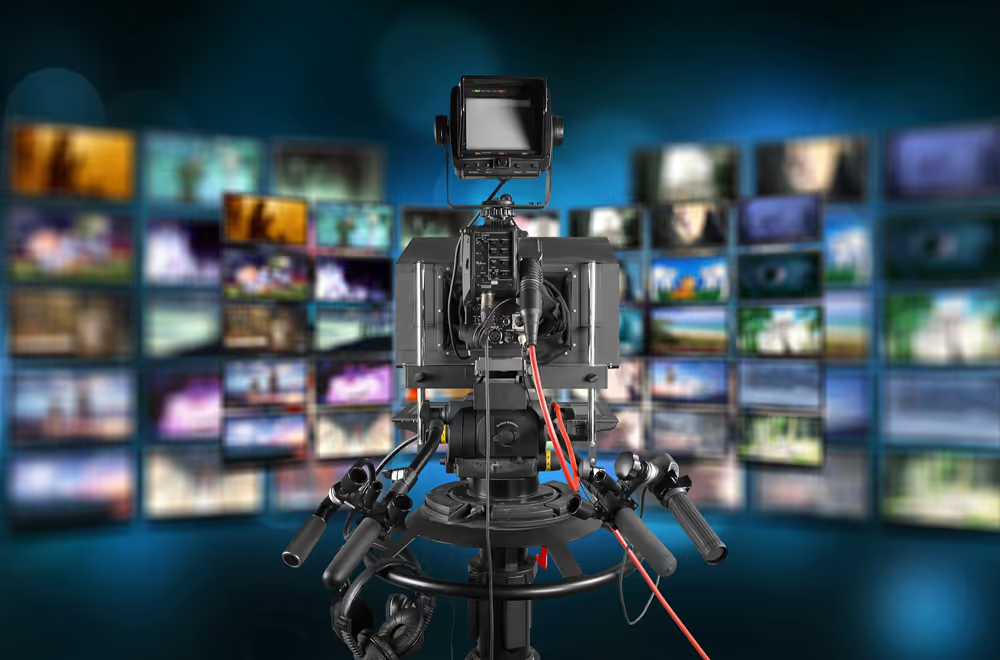Trends in Media Production: What Businesses Need to Know

Introduction
Media production is a major part of modern corporate strategy to stay relevant and connect with people in an ever-changing market. But what is media production now that it has evolved beyond the traditional mix of content development and technology?
Today, media production is undergoing a major digital transformation. It now includes AI that actively reshapes content delivery with personalized recommendations and gamified experiences. These innovations raise audience expectations making it less about what people watch and more about how they interact with it. Explore to learn about the latest media production trends that are reshaping the entertainment industry's future.
Media and Entertainment Trends: Brief Market Outlook
Post-pandemic the demand for media content has grown exponentially as more people want to enjoy quality content from the comfort of their homes. This rapid growth created opportunities across all types of media production from film to podcasts.
In today’s busy world OTT platforms let consumers enjoy content at their own pace thereby managing their timetable without missing out on favourites. This growth spans multiple formats including radio, book publications, games, TV and many other digital mediums.
As these video production trends gain traction having access to skilled creators and storytellers is key. Teams like Filmbaker a well-known video production company in Bangalore help businesses create content that genuinely resonates with audiences.
Current Trends in Digital Media: D2C Video Streaming
D2C video streaming surged during lockdowns as viewers switched to on-demand and high-quality material. This spike in digital video production trends resulted in a fall in traditional pay-TV subscriptions making way for platforms such as Netflix, Hulu and Amazon Prime.
But what distinguishes D2C is its ability to skip intermediaries and engage directly with target audiences giving brands more control over branding, consumer data and monetization. Disney gained early success with Disney+ by pulling content from third-party platforms and bundling it with ESPN+ and Hulu.
Today these go further with algorithm-driven personalization and features like Amazon e-commerce integration. To compete, businesses are resorting to content aggregation and flexible formats, Roku provides modular pay-as-you-go models with niche apps such as Experience Jesus focus on delivering curated religious content and custom suggestions.
Similarly, Stick's gamer-focused platform differentiates itself from Twitch by incorporating social features and community tools. This increased demand is reshaping the streaming market with regional platforms such as Hotstar and corporate film makers building loyal audiences through local and language-specific offerings.
AR & VR: Leading Digital Media Industry Trends
Artificial reality and virtual reality have helped media companies and content creators to bridge the gap between reality and media content. As technology advances and required equipment expenses have come down significantly resulting in exponential growth of consumers.
Big production houses and rising players like Filmbaker photography studios in Bangalore are developing content compatible with VR products building immersive experiences for their consumers. The artificial reality in its own space has expanded the scope of media production by allowing content to be experienced in real-time and concerning actual physical space.
Rise of AI in Media Production
Artificial intelligence has stepped in and transformed the unconventional methods for media production companies. The challenge now is tailoring content to stay on top of the trend curve. On the contrary, the advantages of media powered by AI include processing vast amounts of data to understand consumer emotions, behavioural changes, consumption patterns and reducing costs efficiently. This enables companies to create content and edit effectively to suit the needs of their consumers.
Media companies sit on a gold mine of consumer information but analysing this information proved to be a daunting task until AI tools reduced the workload significantly. It helps companies provide their consumers with the content that they seek based on their research and analysis. However, despite its benefits AI still falls short of human ability to make critical decisions. Thus, a competent team of humans is crucial to skillfully unlocking the full potential of AI tools.
Sustainability in Media Production
As climate concerns grow, the media and entertainment (M&E) business is embracing greener production methods. This trend is driven not only by ethical concerns but also by rising consumer expectations to support companies that demonstrate commitment to sustainability.
Leading companies such as Sky and the BBC have announced bold goals including Sky’s target to reach net-zero emissions by 2030. In response, companies are embracing technologies like AI-powered energy management, flexible set designs and renewable resources.
Nevertheless, energy-efficient 5G, naturally cooled data centres, and paperless workflows are helping reduce environmental impact and cost. At the same time, remote collaboration and virtual shoots are becoming standard in building sustainable media production strategies.
Conclusion
The media and entertainment industries are expected to evolve quicker than ever before with powerful new technologies and escalating audience expectations. To stay ahead, focus on trends like AI-powered personalization, immersive AR/VR and culturally relevant content.


